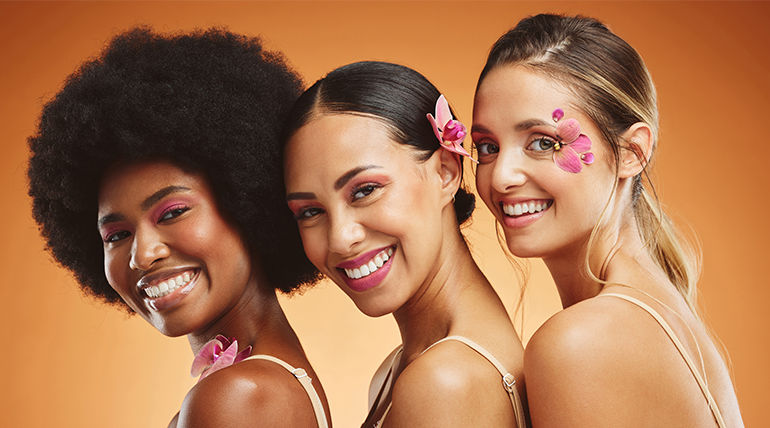Inclusion has long been a major challenge for the beauty industry, especially for all skin tones. For years, darker skin has been underrepresented in products and advertising. Beauty technology is ushering in a new era where inclusivity is no longer just a catchphrase but a priority. Beauty companies are using artificial intelligence, machine learning, and data analytics to create smarter, more diverse products that fully reflect the diversity of human skin. This shift is cultural, not cosmetic. Advances in technology have enabled all platforms to offer more accurate color matching, more personalized skincare routines, and more realistic skin representation. This article explores how this shift is ultimately happening and why.
The Problem with Traditional Beauty Standards
For decades, media beauty standards have emphasized fair skin. Skincare recommendations have ignored melanin-rich skin, and foundations have limited shade options. This lack of representation is annoying and destructive, contributing to poor social norms and preventing millions of people from accessing appropriate skincare products. It forces people with darker skin to mix their own foundation, make their own foundation, or simply not use it at all. The problem is a lack of innovation and knowledge, not demand. As the global awareness of inclusivity grows, the beauty industry is realizing that diversity is key.
Machine Learning and AI Skin Tone Recognition
Artificial intelligence and machine learning are revolutionizing beauty technology. These advanced tools can accurately analyze a wide range of skin tones. Unlike previous systems that misclassified darker skin tones or generalized skin tones into a few basic categories, today’s algorithms train on multiple datasets. The system allows users to upload photos and receive personalized recommendations for undertones, pigmentation, and hyperpigmentation. Instead of treating skin tones as a single, identical entity, beauty technology celebrates the unique beauty of each skin tone. Being inclusive is a major step in winning and satisfying forgotten customers.
Data-Driven Foundation Shade Expansion
The expansion of foundation shades is a major development in the inclusive beauty industry. Tech-driven data analytics helps brands identify product gaps. Companies are using consumer reviews, social media feedback, and purchasing trends to uncover unmet needs, especially among people of color. Many manufacturers now offer 40, 50, or even more foundation shades to match every skin tone. Quality is just as important, not just quantity. AI can simulate how colors look on different undertones, allowing brands to perfect formulas for natural-looking makeup. The result? Custom looks.
Virtual Try-ons for Everyone
Early augmented reality (AR)-based virtual try-ons had serious shortcomings. They often misrepresented darker skin, resulting in gray lipstick and gray foundation. But that’s changing. Today, inclusive beauty technology uses superior color calibration, lighting simulation, and data sets to provide realistic previews for all users. These advancements are empowering consumers of all skin tones to shop online, discover, and try new styles without prejudice. It reduces returns, increases satisfaction, and empowers users to find the right products at home.
Melanin-Friendly Skincare
Understanding the biology of individual skin is part of inclusivity, not just color matching. Melanin-rich skin can develop hyperpigmentation, keloid scars, and sensitivity to harsh ingredients. Today, beauty technology takes such factors into account. AI diagnostic tools analyze melanin and offer treatments for skin conditions. Apps with feedback loops customize recommendations based on skin response. These technologies improve health and inclusion by recognizing the unique characteristics of melanin-rich skin.
Real Representation in Marketing and Tech Development
For true inclusivity, technology must begin at the backend. That means algorithms, products, and marketing campaigns all need to be designed with diverse voices in mind. Fortunately, inclusivity is being promoted at every level, from hiring more diverse engineers and dermatologists to featuring real users from different backgrounds in advertising images. Authentic and diverse representation builds trust, helping consumers feel seen, heard, and valued. It also ensures that technology evolves with empathy and accuracy and is aligned with real-world needs and beauty.
Building Inclusive Technology with Community Feedback
Adaptability is a powerful force for inclusive beauty technology. Developers are increasingly turning to user feedback to improve systems. From reviews and ratings to in-depth survey results, all data helps improve shade ranges, algorithms, and user experiences. Social media provides real-time feedback on product and technology launches, providing valuable insights. Brands that embrace and act on this feedback can improve products and build relationships. Consumers and manufacturers can have respectful, purposeful conversations.
Conclusion
Beauty tech is now focused on global diversity, which is a timely and welcome development. Advanced AI, smarter data, and inclusivity are helping the industry create a space where everyone feels valued, appreciated, and radiant. Now, consumers of all skin tones can find tools and products that are right for them without having to conform to outdated standards or shade ranges. As technology advances, the possibilities for inclusive beauty are endless. A future where beauty is empowered by representation, not exclusion. This is a future where everyone has the opportunity to shine.
FAQs
1. Why does beauty tech struggle with inclusivity?
Early technology used limited datasets that focused on lighter skin tones. Early technology misrepresented and lacked tools for darker skin tones.
2. How can AI make beauty products more inclusive?
AI can scan vast databases to identify skin tones, predict skin tones, and personalize skincare, making products more accurate and personalized.
3. Can virtual try-ons now match all skin tones?
Many platforms are using enhanced facial recognition and color-matching technology to display all skin tones, making the experience more realistic and inclusive.
4. What skincare concerns are specific to melanin-rich skin?
Melanin-rich skin is more prone to hyperpigmentation, scarring, and chemical sensitivities. Inclusive beauty tech takes these variables into account when recommending products.
5. How can consumers promote inclusive beauty tech?
Consumers can help create a more inclusive future by choosing diverse brands, providing feedback, and lobbying for product development and marketing.

